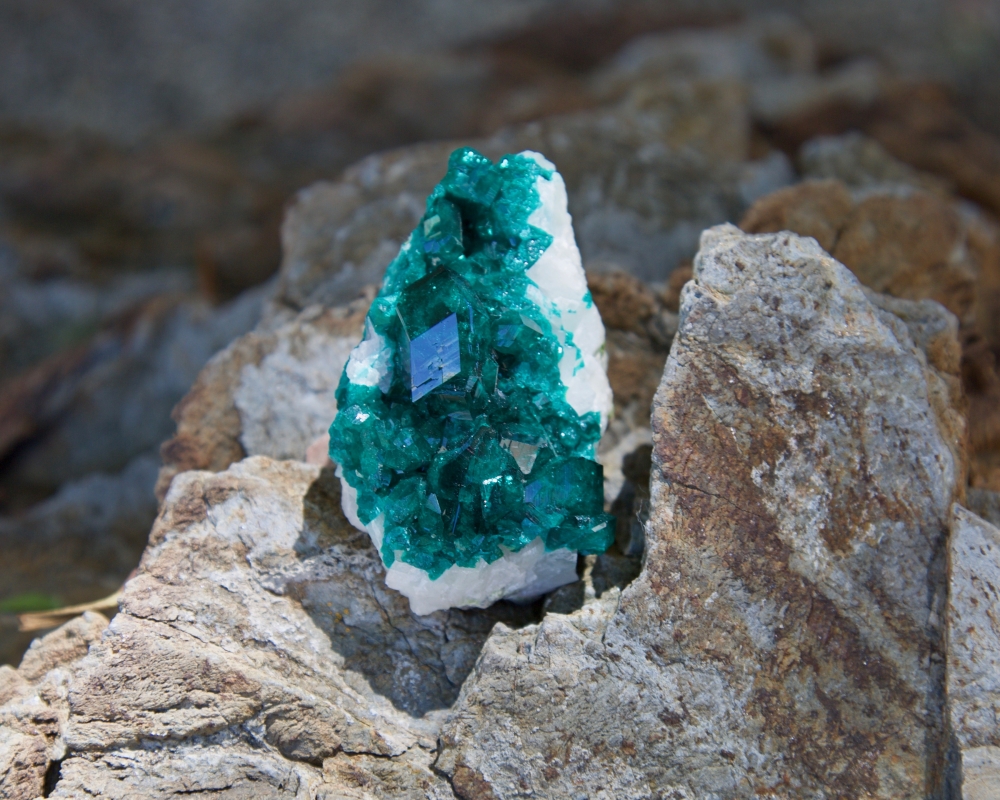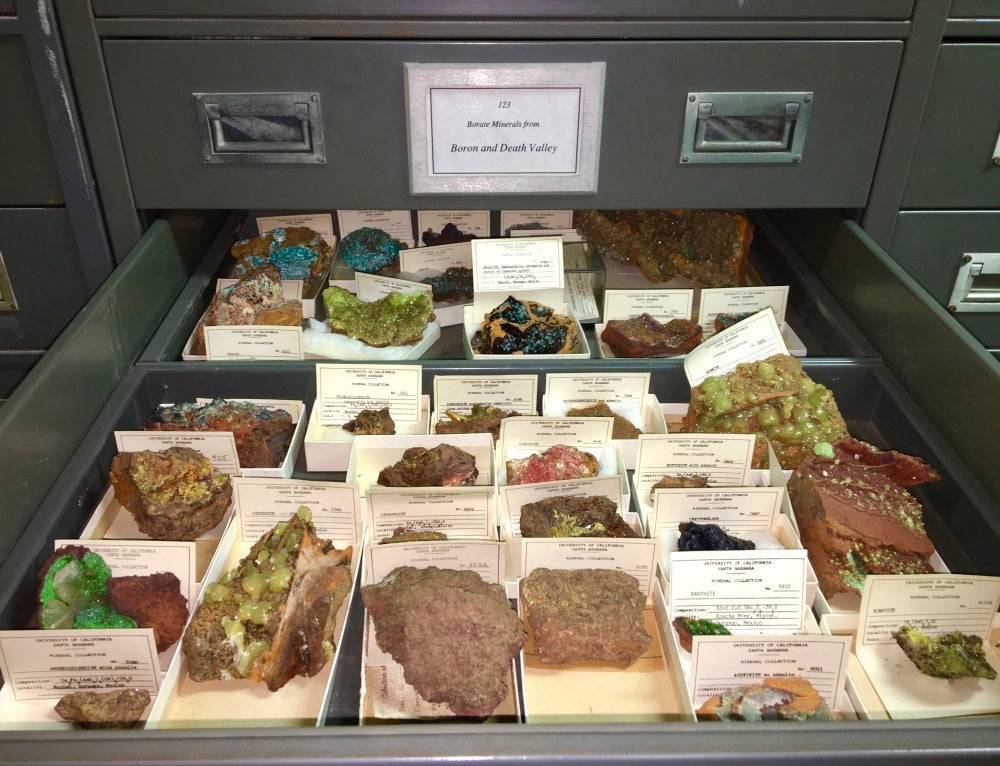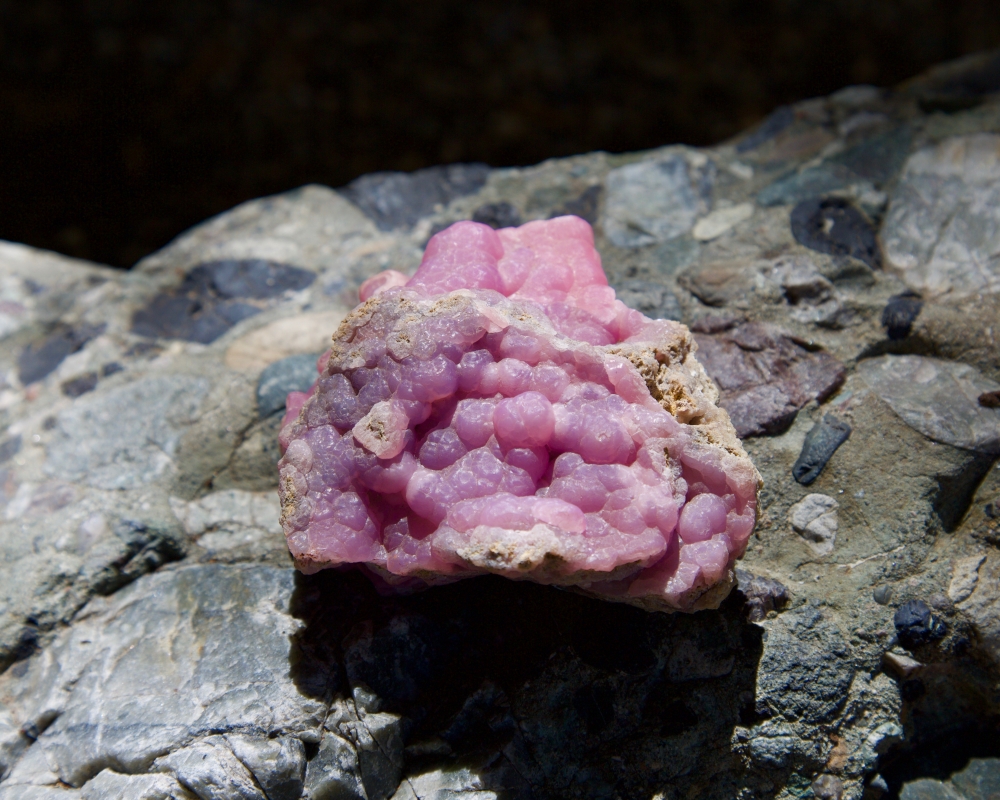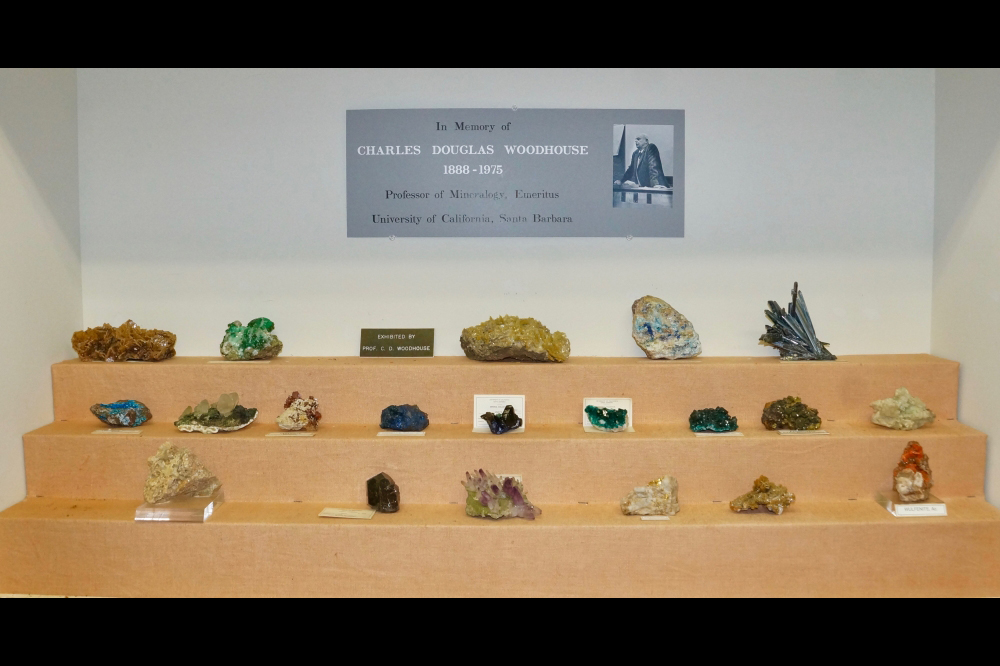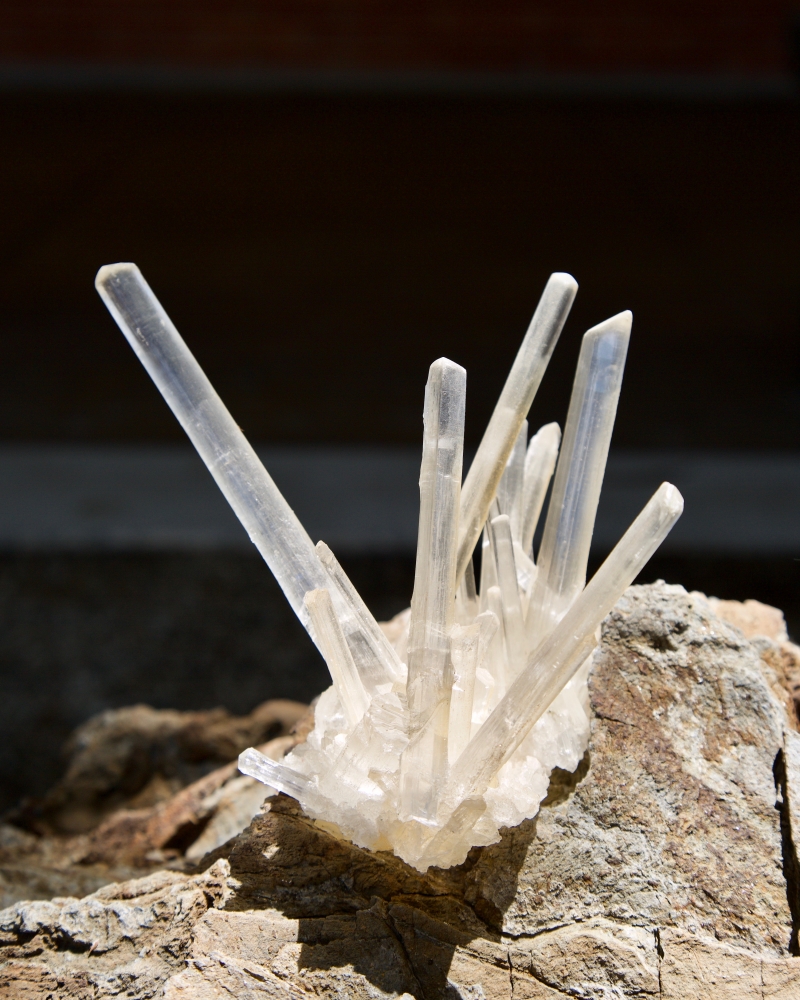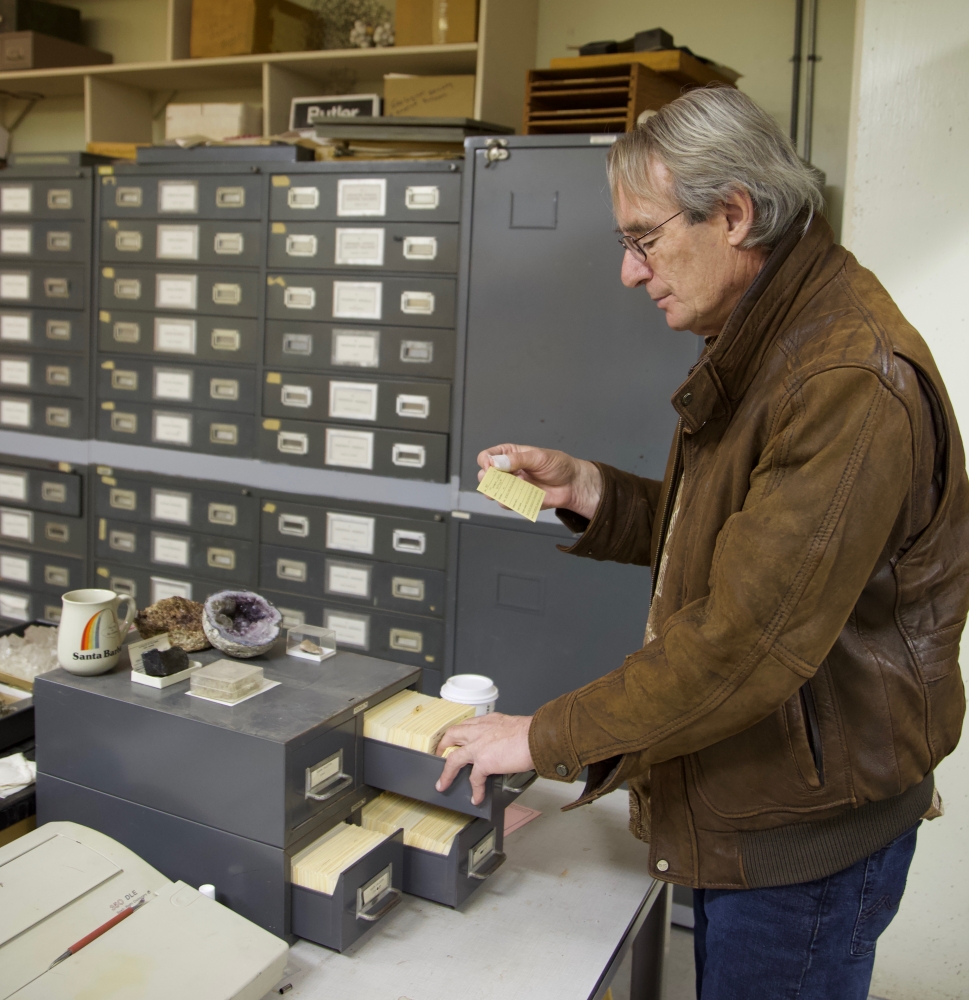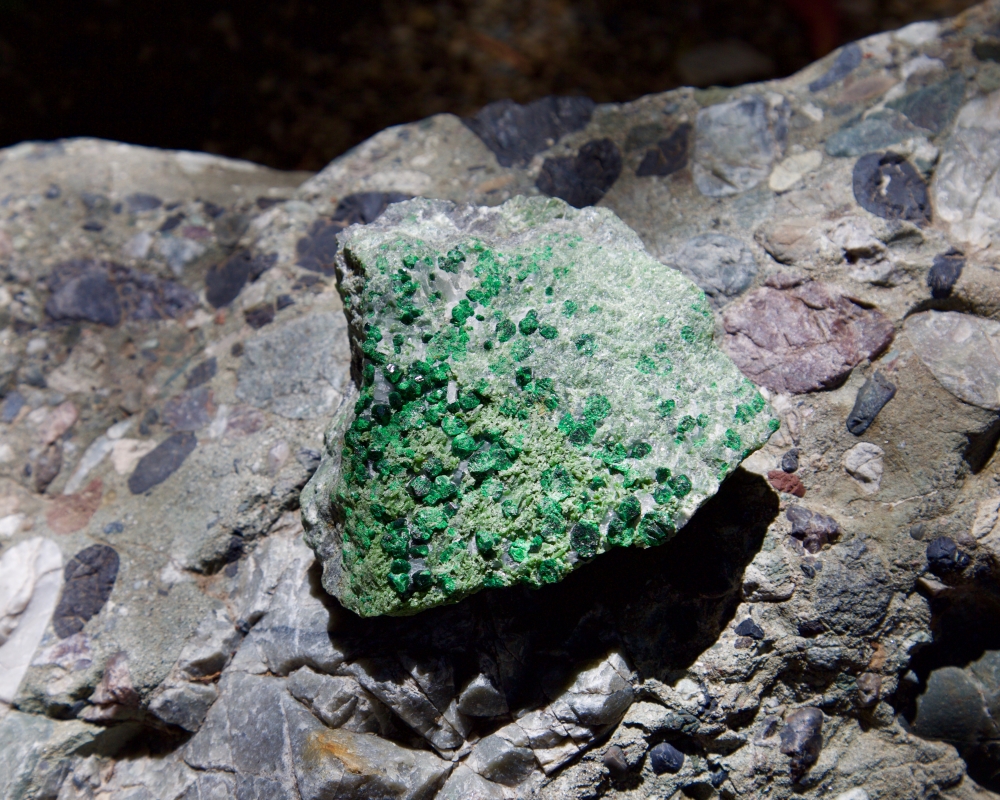Hidden Treasure
Most minerals come from underground, so it seems fitting that the Department of Earth Sciences keeps many of its collections in a basement. But one in particular stands out from the rest. There, in the recesses of Webb Hall, lies a genuine treasure: the world-class mineral collection of the late professor Charles Douglas (Doug) Woodhouse.
Kept under lock and key, some 200 drawers contain more than 8,000 specimens, from fluorescent arsenates to gem quality tourmalines. Woodhouse organized samples by type and location, and complemented the material with copious notes. Many of the specimens were collected by Woodhouse himself, who visited hundreds of mineral collecting sites, mines and quarries throughout his long career as a mineralogist and professor at UC Santa Barbara.
“There aren’t that many of these collections around,” said Frank Spera, a professor emeritus who has become the collection’s de facto custodian. “It has samples, for instance, from mines that are no longer around, that are now shopping centers.”
Collections like this hark back to the scientific practices of the 18th and 19th centuries, when geologists, botanists, ornithologists and many other scientists assembled extensive research collections to aid in their studies.
Woodhouse’s assemblage is distinguished by his particular expertise. The son of New England bankers, he earned two law degrees and served in the First World War. However, his true passion lay in the dazzling world of gems and minerals. So he set aside his degrees, and the financial security of a career in law, and went to France to study mineralogy.
“They always say to kids, ‘pursue your interests as a career,’” Spera said. “Well this guy was trained in law — he had two law degrees — was from a wealthy East Coast family. He gave up all that stuff and pursued his dream.”
Woodhouse took a keen interest in the mineralogy of the West, and his collection reflects this scope but includes specimens from virtually all the continents. He devoted entire cabinets to minerals from particular regions and filled drawers with exquisite examples from each location. Ultimately he assembled, among other things, a premier collection of minerals from western North America.
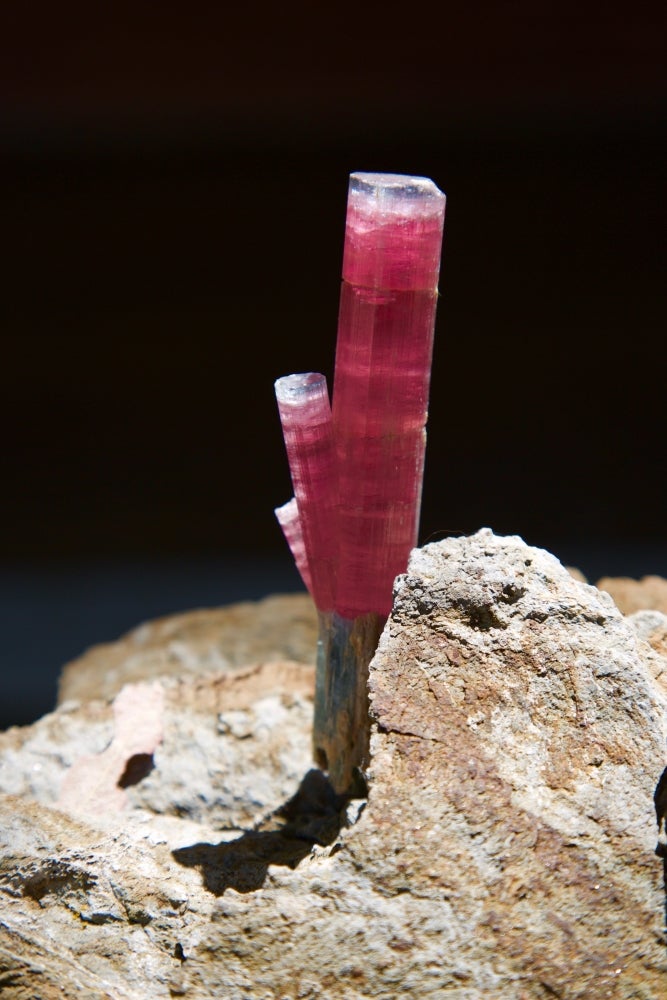
A pink and green tourmaline prism from the San Diego pegmatites.
Photo Credit: HARRISON TASOFF
Opening a drawer marked San Diego Pegmatites, Spera revealed gem quality aquamarines, watermelon-colored tourmalines and fairy pink kunzite, all signature minerals from the world-famous granites of San Diego County.
Dozens of minerals are contained in a drawer labeled Franklin Furnace — a location renowned for its diversity of mineral species, as well as the impressive number that glow under ultraviolet light. Each specimen provides an account of the unique geology of that area.
The Woodhouse Collection is truly comprehensive, with samples like suanite that surprise even Professor Spera. “I didn’t even know this was a compound,” he said, squinting at the notecard accompanying the peculiar mineral, “and I’m a mineralogist myself.”
Chalk up the lot’s quality to Woodhouse himself. The man had an enthusiast’s eye, a researcher’s mind and a miner’s sensibilities, and he drew upon all of these qualities to assemble a collection that is as beautiful as it is useful.
Before joining UC Santa Barbara as its first geology professor in 1939, Woodhouse managed the Champion Mine high up in the White Mountains of Mono County. The mine produced aluminum silicates like andalusite that found uses first in dental porcelain and then as sparkplugs at a time when the automobile industry took off with a demand for high-temperature, refractory materials. The mine boasts another distinction as well: A particular cream-colored phosphate mineral was first discovered there — a mineral that now bears the name Woodhouseite.
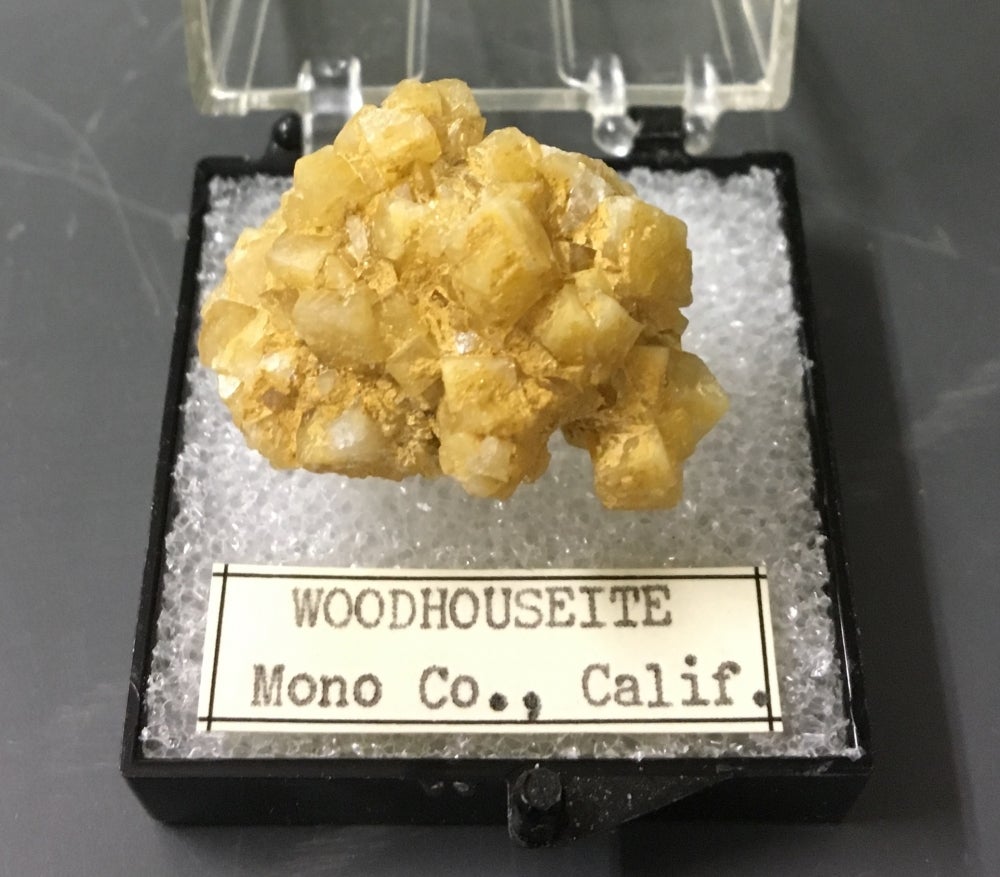
Woodhouseite
Photo Credit: HARRISON TASOFF
Unlike many collectors (academic or recreational) Woodhouse personally visited most of the locations represented in his collection and often gathered specimens directly. He’d talk with mine operators, go out in the field and barter for the few minerals he couldn’t get himself through a network of other mineral collectors, mineralogists and geologists.
No one knows the collection’s true value or extent since it has yet to be appraised and digitized. “I’m sure it’s worth quite a bit,” said Spera. For now, the late professor’s meticulous records sit in eight dusty binders, waiting to be entered into electronic spreadsheets to bring the collection’s database and resources into the 21st century.
Collections like the one Woodhouse assembled serve as resources for ongoing research the world over. As scientists and curators communicate and collaborate, specimens become the foundation of further discoveries, and often scientists will borrow samples from collections in this regard
Spera is certain that researchers from around California would make use of the Woodhouse Collection if it were accessible and searchable online. Currently he and some of his colleagues use it for teaching and as a source of standard specimens to compare to when conducting research. But they do so sparingly in the absence of a dedicated staff member or searchable database. Ideally, Spera said, the collection will one day have a curator to preserve, digitize and display the materials and records so they are more accessible to researchers and the public alike.
“It’s a unique and fantastic collection,” Spera said. “It just needs some tender love and care.”
